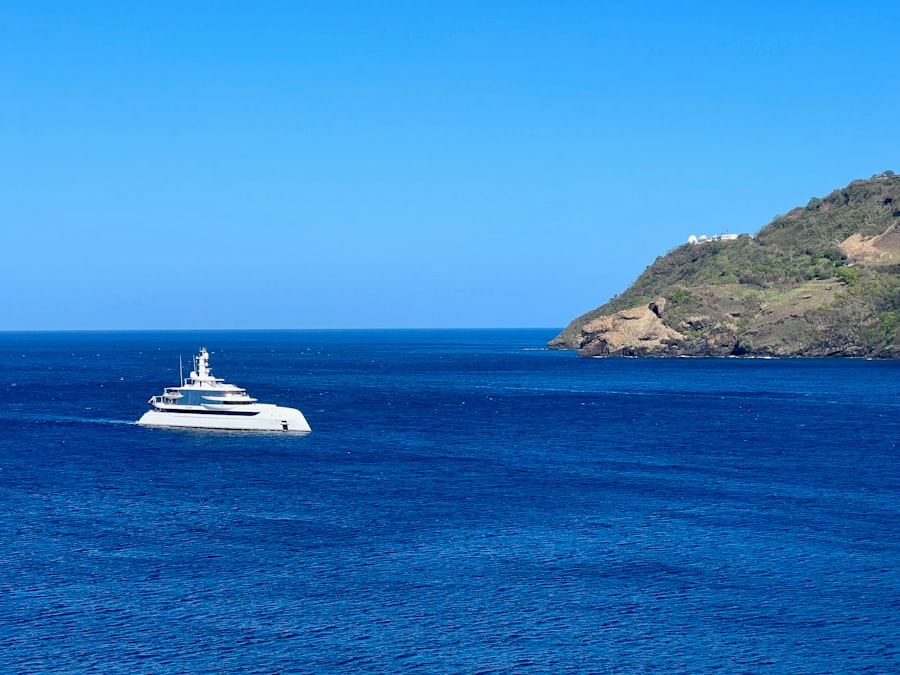Download links
How to install Exploring the High Seas: A Look at Cruise Outlook APK?
1. Tap the downloaded Exploring the High Seas: A Look at Cruise Outlook APK file.
2. Touch install.
3. Follow the steps on the screen.
Description
The cruise industry has experienced remarkable growth over the past few decades, transforming from a niche segment of the travel market into a global phenomenon. In the early 1980s, the industry was relatively small, with only a handful of cruise lines operating a limited number of ships. However, as consumer interest in cruising surged, major players like Carnival Corporation and Royal Caribbean International expanded their fleets and offerings.
By 2019, the global cruise industry had reached an estimated market size of $150 billion, with over 30 million passengers embarking on cruises each year. This growth can be attributed to several factors, including increased disposable income, a growing middle class in emerging markets, and the allure of all-inclusive travel experiences. The expansion of cruise itineraries has also played a significant role in the industry’s growth.
Cruise lines have diversified their offerings to cater to a wide range of interests and demographics. From family-friendly cruises featuring onboard entertainment and activities to luxury voyages that emphasize fine dining and exclusive excursions, there is now a cruise experience for nearly every type of traveler. Additionally, the rise of social media and online travel platforms has made it easier for potential cruisers to research and book their trips, further fueling interest in this mode of travel.
As a result, the cruise industry has not only grown in terms of passenger numbers but has also evolved to meet the changing preferences of modern travelers.
Key Takeaways
- The cruise industry has experienced significant growth in recent years, with more people opting for cruise vacations.
- New trends in cruise travel include themed cruises, shorter itineraries, and an emphasis on wellness and sustainability.
- Technology has greatly impacted the cruise experience, with the introduction of keyless entry, wearable technology, and virtual reality experiences.
- Environmental concerns in the cruise industry have led to the implementation of sustainable practices and the use of cleaner fuel sources.
- The future of luxury cruising is focused on personalized experiences, innovative amenities, and a greater emphasis on sustainability and wellness.
- Emerging destinations in cruise itineraries include exotic locations such as Antarctica, the Galapagos Islands, and remote parts of Asia and Africa.
New Trends in Cruise Travel
As the cruise industry continues to evolve, several new trends have emerged that reflect changing consumer preferences and technological advancements. One notable trend is the increasing demand for experiential travel. Modern cruisers are seeking more than just a floating hotel; they want immersive experiences that allow them to connect with local cultures and environments.
Cruise lines are responding by offering unique shore excursions that go beyond traditional sightseeing tours.
Another significant trend is the rise of wellness-focused cruising.
As health and wellness become more prominent in people’s lives, cruise lines are incorporating wellness programs into their itineraries.
For example, Celebrity Cruises has introduced its “Wellness at Sea” program, which features fitness classes led by renowned instructors and wellness seminars on topics such as nutrition and mindfulness.
This shift towards wellness reflects a broader societal trend where travelers prioritize their physical and mental well-being while on vacation.
The Impact of Technology on Cruise Experience

Technology has revolutionized the cruise experience in numerous ways, enhancing both onboard amenities and shore excursions. One of the most significant advancements is the introduction of mobile apps that allow passengers to manage their cruise experience seamlessly. These apps enable travelers to check in for their cruise, make dining reservations, book excursions, and even communicate with fellow passengers—all from their smartphones.
For instance, Royal Caribbean’s app provides real-time updates on onboard activities and allows guests to order drinks directly to their poolside loungers. Moreover, technology has also improved safety and efficiency within the cruise industry. The implementation of facial recognition technology at embarkation ports has streamlined the boarding process, reducing wait times and enhancing security measures.
Additionally, many cruise lines are investing in advanced navigation systems that utilize satellite technology to optimize routes and improve fuel efficiency. This not only enhances the overall guest experience by minimizing travel time but also contributes to more sustainable practices within the industry.
Environmental Concerns in the Cruise Industry
| Environmental Concerns | Impact | Current Status |
|---|---|---|
| Carbon Emissions | Contributes to climate change | Efforts to reduce emissions through technology and alternative fuels |
| Waste Disposal | Pollution of oceans and coastal areas | Improvements in waste management and recycling programs |
| Ballast Water Management | Introduction of invasive species | Implementation of ballast water treatment systems |
| Air and Water Pollution | Impacts on air and water quality | Regulations and technologies to reduce pollution |
Despite its growth and popularity, the cruise industry faces significant environmental challenges that have garnered increasing scrutiny from both consumers and regulatory bodies. One of the primary concerns is the environmental impact of large cruise ships on marine ecosystems. These vessels can produce substantial amounts of waste, including sewage and hazardous materials, which can harm ocean life if not managed properly.
In response to these concerns, many cruise lines are implementing more stringent waste management practices and investing in advanced wastewater treatment systems that meet or exceed international standards. Air pollution is another critical issue associated with cruising. The heavy fuel oil used by many ships emits sulfur oxides and nitrogen oxides, contributing to air quality degradation in port cities and coastal areas.
To address this problem, several cruise lines are transitioning to cleaner fuels or adopting hybrid technologies that reduce emissions. For example, Norwegian Cruise Line has committed to using liquefied natural gas (LNG) for its new ships, which significantly lowers harmful emissions compared to traditional fuels. Additionally, some companies are exploring alternative energy sources such as solar power and battery technology to further minimize their environmental footprint.
The Future of Luxury Cruising
Luxury cruising is poised for continued growth as affluent travelers seek unique and personalized experiences at sea. The definition of luxury is evolving; today’s discerning travelers are looking for more than just opulent accommodations and fine dining. They desire authentic experiences that allow them to engage with local cultures and explore off-the-beaten-path destinations.
In response, luxury cruise lines are curating bespoke itineraries that focus on immersive experiences rather than traditional tourist attractions. For instance, ultra-luxury lines like Seabourn and Silversea are offering expedition-style cruises that take guests to remote locations such as Antarctica or the Arctic Circle. These voyages often include expert-led excursions that provide insights into local wildlife and ecosystems, catering to travelers who prioritize adventure alongside luxury.
Furthermore, personalized service remains a hallmark of luxury cruising; many lines are investing in smaller ships that allow for a higher staff-to-guest ratio, ensuring that each passenger receives tailored attention throughout their journey.
Emerging Destinations in Cruise Itineraries

Discovering Japan’s Hidden Gems
Japan is another emerging destination that has seen a significant surge in cruise traffic. Travelers are drawn to its rich history, vibrant culture, and blend of ancient traditions and modern innovations. Cruise lines like Princess Cruises have introduced itineraries that include stops at lesser-known ports like Shimizu and Kochi, allowing passengers to explore beyond the typical tourist hotspots like Tokyo and Kyoto.
A Shift Towards Immersive Travel Experiences
This trend reflects a broader shift towards more immersive travel experiences that prioritize cultural engagement over mere sightseeing. Travelers are no longer content with simply visiting popular tourist attractions; they want to engage with local communities, learn about their customs, and experience the authentic culture of a destination.
The Future of Cruising
The cruise industry is undergoing significant transformations driven by consumer demand for unique experiences, technological advancements, environmental considerations, and evolving definitions of luxury travel. As it continues to grow and adapt to these changes, the future of cruising promises exciting opportunities for both travelers and operators alike.
If you’re interested in learning more about the future of fisheries in Indonesia, check out the article Perspektif Pangingisda: Masa Depan Perikanan Indonesia on Outlook Cruise’s website. This insightful piece delves into the challenges and opportunities facing the fishing industry in Indonesia and offers a unique perspective on how it may evolve in the coming years.
FAQs
What is Outlook Cruise?
Outlook Cruise is a cruise event that brings together music, culture, and entertainment on board a luxury cruise ship. It offers a unique experience for attendees to enjoy live performances, DJ sets, and various activities while sailing to different destinations.
What can attendees expect at Outlook Cruise?
Attendees can expect to enjoy live music performances from a diverse lineup of artists, DJ sets, themed parties, workshops, and other entertainment activities. The cruise also offers the opportunity to explore different ports of call and participate in shore excursions.
Is Outlook Cruise suitable for all ages?
Outlook Cruise is primarily targeted towards adults and young adults. While there may be family-friendly activities and accommodations available, the overall atmosphere and entertainment are geared towards an adult audience.
How can one book tickets for Outlook Cruise?
Tickets for Outlook Cruise can typically be booked through the official event website or through authorized ticketing partners. It is important to check for any age restrictions, booking requirements, and cancellation policies before purchasing tickets.
What are the destinations typically covered by Outlook Cruise?
Outlook Cruise may offer different itineraries covering various destinations such as Mediterranean ports, Caribbean islands, or other popular cruise routes. The specific destinations and ports of call can vary for each edition of the event.





